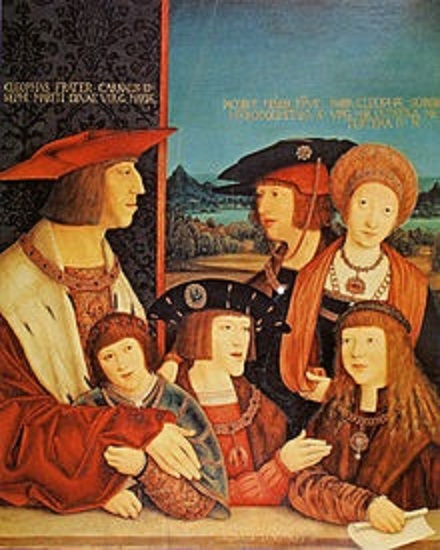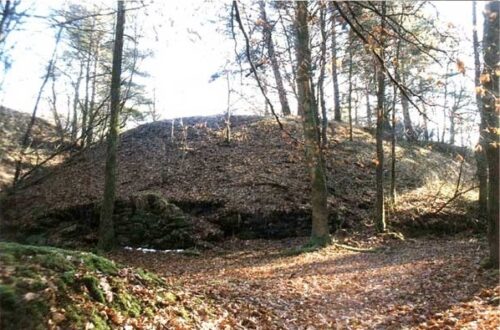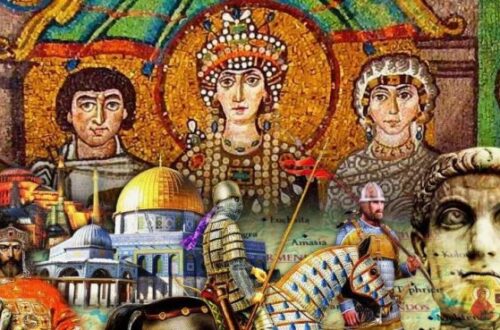
The Start of our Reckoning the Years AD : 1501
The Start of our Reckoning the Years AD : 1501
Excerpt from the book by Uwe Topper, Das Jahrkreuz (2016, pp. 434 – 437), transl. by Nick Weech
The annual year count- our chronology – as far as has come out – is likely to be a result of the ‘Easter dispute’: So the Church claims. Dionysius Exiguus created the Easter timetable (still in use today), and he also originated our Anno Domini count.
The objection to this is: the Church faked it to occur at least a millennium earlier than it really did!
It is actually difficult to say when our annual counting system was first used. In earlier books (most recently in Kalendersprung 2006), I explained that the counting of the years “after the birth of Christ” was not introduced in Germany until after 1500, around 1520/21. This moment seems to coincide with the coronation of Charles V as Emperor, which is why I am looking at him again. I select some dates based on general historiography (mostly taken from Jurewitz-Freischmidt 2000).
Charles (I or V, emperor of Germany) was born by Juana (later called la loca) on the night of February 24, 1500 in Ghent without any help or witnesses on the privy in the palace. Up to the very last moment she was taking part in the great festival that her husband, Philip of Burgundy ruler of Flanders, was in charge of. This was “the festival of the Flemish Estates”, with diplomats, Burgundian nobility, and notables from other Flemish cities.
It could have been New Year’s Eve, but this is not expressly said. The birth of the male heir to the throne was announced that same night by traditional gun salutes. (Juana already had one daughter, giving birth to another daughter a year later).
A week later, on March 7, the baptism is celebrated, again at night. If February 24th had been the last day of the previous year (since 5 extra days, called epagomenes, didn’t count or were inserted elsewhere), then March 7th already belonged to the year called later 1501. Starting from then, the years were counted on in this way or were perhaps set in this way some decades later.
The boy was christened Charles after his great-grandfather, that is Charles the Bold of Burgundy, whom his father Philip wanted to honour. He received the title of Duke of Luxembourg at his baptism. His grandfather Emperor Maximilian, the “last knight”, was not present. He made him a member of the Order of the Golden Fleece in his first year. The two godparents were other knights from this order.
All of this should be notarised somewhere, right?
On January 5, 1515 (according to others: “at the age of 16”), Charles declared himself of legal age in the Estates Hall of the Castle and on the Market Square in Brussels. On March 13, 1516, after the news of the death of Ferdinand of Aragon, Charles was proclaimed King of Spain in the Cathedral of Brussels. He looked boyish then, beardless, still growing. On the 8th/9th Sept. 1517 he left for Spain.
 (Karl as boy among his family (painting by Strigel)
(Karl as boy among his family (painting by Strigel)
After the death of his grandfather Emperor Maximilian on January 12, 1519, Charles was elected Emperor and crowned in Aachen on October 20, 1520. From this year onwards, in my opinion the numbering of years using A(nno)D(omini) began to spread. The starting year was moved back to Karl’s birthday on 1. 1. (15)01. Dürer went to Holland for the coronation and must have come to know this ‘new custom of counting the years at Karl’s court and then have used it back in Nuremberg as a leading intellectual: Documents from Dürer’s workshop support this assumption. He also later updated his earlier drawings with data himself, but not always correctly as is believed today.
Oddly enough, this 1/1/1501 (1500 in today’s count) was also the day of the ‘lunar new light’, as Caesar’s reformed New Year on 1/1 (or 2) in 44 BC. began also with ‘new light’ of the moon. The Easter reckoning with year 1 of Alexander also has new light on January 1 (222) (Voigt 2008, note 24). Here is an indicator showing these year numbers were chosen most assiduously.
The year 1501 as the beginning of a new epoch was subsequently linked to an era of the creation of the new world. A Portuguese stonemarker of conquest (padrão) in the museum in Lisbon bears the years 1482 AD and 6681 world era, which results in 1501 being the classic year of the end of the old world, 7000 (Ferreira p. 71).
Charles V believed, particularly from his reading the book by Oliver de la Marche, a Frenchman who died in 1502, that all crowned rulers of Europe descended from the heroes of Troy long before Christ: The House of Habsburg went back directly to Priamus. I consider this to be another indicator these same rulers and ‘Argonaut knight descendants’ only were declared Christians, mostly posthumously.
The poet Oliver appears a forerunner of Annius of Viterbo, inventor of many royal ancestors. Finally, Sebastian Münster (1628, p. 649) describes in detail the upbringing of the boy Karl, his teachers and his reading material. The Christian religion is not mentioned at all, neither with authors nor in book titles.
From around 1521/22 more and more documents appear bearing this year, also from the Vatican, where some were altered after.
The question remains when any dates appear: Do they belong to our system we use today or do they come from a different period?
Charles V was transformed into a Catholic king very soon after his death, and the Jesuits’ hand is visible in many documents. Jurewitz-Freischmidt (p. 229 f) describes this very vividly in connection with Luther’s appearance in Worms in 1521:
“Karl is deeply outraged … and is forced to open his visor and put his program down on paper alone and with his own hand for the first time. What he writes that night he can and will never take back.”
So ends this unique document, where Charles condemns Luther’s error with reference to the (fabulous) Council of Constance a hundred years ago, as Jurewitz-Freischmidt puts here in a German translation of the French text:
“In this matter we will do our utmost , with Our Kingdoms and Dominions, Our Friends, Our Body, Our Blood, Our Life and Our very Souls.”
This theatrical thunder disturbed neither Luther nor his followers; it was quite probably written long after the event by some unworldly theologian.




